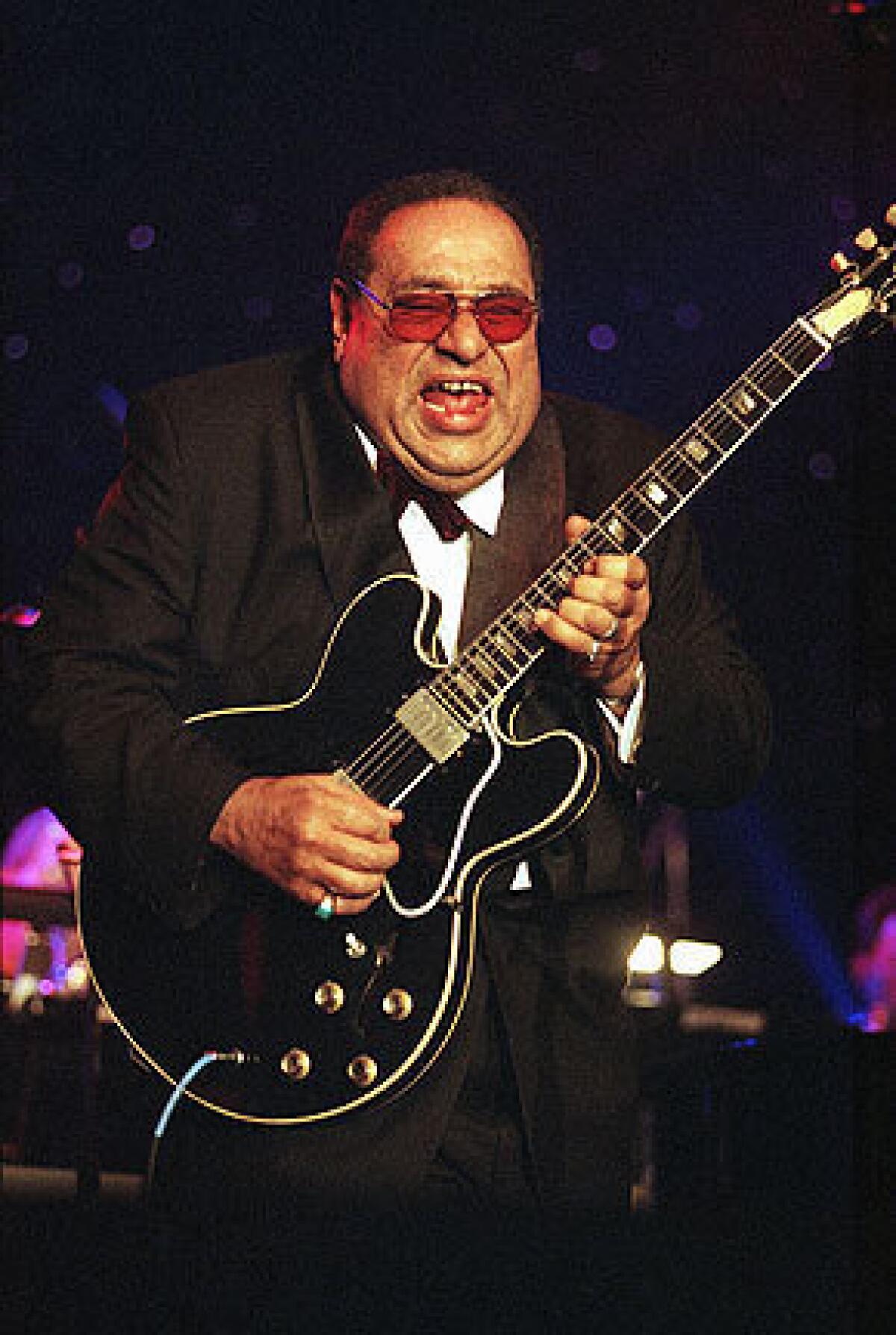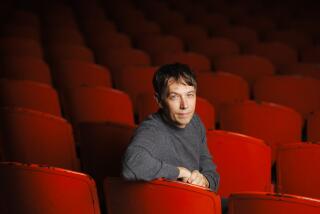Mickey Baker dies at 87; rhythm and blues, rock guitarist

- Share via
Mickey Baker, an exceptional 1950s session guitarist who played on hundreds of recordings, helping to transform rhythm and blues into rock ‘n’ roll, died Tuesday at his home near Toulouse, France, according to French media reports. He was 87.
A cause of death was not disclosed.
Baker “was the first great rock and roll guitarist,” rock historian Dave Marsh wrote in 1989 in “The Heart of Rock and Roll: The 1001 Greatest Singles Ever Made.” The sassy “Love Is Strange” was one of them.
PHOTOS: Notable deaths of 2012
Rolling Stone once called the recording Baker’s “crowning achievement.” He performed the 1957 hit as a duet with Sylvia Vanderpool, who took guitar lessons from him and soon determined they could succeed as a duo.
As Mickey & Sylvia, they came up with the million-selling “Love Is Strange” at their second session. Bo Diddley had written the song but passed it along to them because he was angry with his music publishers because they never paid him enough, Marsh wrote.
The recording received renewed attention in 1987 when it was featured in the movie “Dirty Dancing” and again this year when it was sampled on rapper Pitbull’s “Back in Time” single that was in the film “Men in Black 3.”
Pop music historian Jim Dawson called “Love Is Strange” “probably the most hypnotic rock ‘n’ roll record of the ‘50s.”
“One of Mickey & Sylvia’s biggest fans was Buddy Holly,” Dawson told The Times. “He would listen to ‘Love Is Strange’ in the dark, over and over, analyzing it.”
Baker’s guitar licks heavily influenced several Holly songs, especially “Words of Love,” which the Beatles “would later duplicate note for note,” Dawson said.
In the 1950s, Baker was New York’s top rhythm-and-blues sessions guitarist, according to Dawson.
Baker played on such classics as the Drifters’ “Money Honey,” Big Joe Turner’s “Shake, Rattle and Roll” and Big Maybelle’s “Whole Lotta Shakin’ Goin’ On.”
When Rolling Stone placed Baker at No. 53 on its list of the 100 greatest guitarists, the magazine said in 2003: “Those keening licks and hectic chords” on “Love Is Strange” “sound as unearthly today as they did five decades ago.”
He was born McHouston Baker on Oct. 15, 1925, in Louisville, Ky., to Lillian Smith, a young single mother. He spent time in institutions for troubled children, where he learned to play musical instruments and repeatedly ran away.
In his mid-teens, Baker succeeded in escaping to New York City and a seedy life that included petty crime before he turned to music. Unable to afford a trumpet, he bought a pawnshop guitar.
Largely self-taught, he quickly became something of a guitar virtuoso. He first aspired to be a jazz musician but during a 1940s trip to California was captivated by rhythm and blues — and decided he could find more work in the genre.
From the 1940s on, Mickey “Guitar” Baker was featured on countless recordings, accompanying such artists as Ray Charles, the Coasters, Ivory Joe Hunter and Screamin’ Jay Hawkins.
By the mid-1950s, he had teamed up with Vanderpool and collaborated with her for a decade. She went on to co-found the pioneering rap label Sugar Hill and died last year at 76.
Increasingly disillusioned with the American music industry, Baker — in the face of pervasive racism — moved to France along with many other African American musicians in the 1960s and lived a relatively quiet life, according to “Contemporary Black Biography.” Information on survivors was not available.
Since the late 1960s, Baker had mainly devoted himself to writing instructional guitar books and CDs, including a widely used two-volume book on jazz guitar. A biography on Frank Zappa said the guitarist had learned to play from one of Baker’s how-to books.
More to Read
Start your day right
Sign up for Essential California for the L.A. Times biggest news, features and recommendations in your inbox six days a week.
You may occasionally receive promotional content from the Los Angeles Times.








